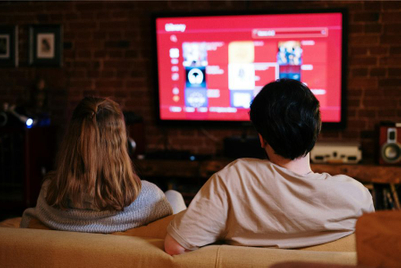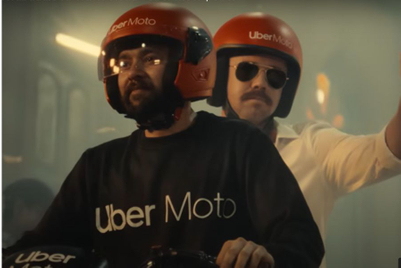.jpg&h=570&w=855&q=100&v=20250320&c=1)
India’s advertising landscape is undergoing a seismic transformation, propelled by the rapid convergence of technology, creativity, and consumer experience. The recently released ‘dentsu Digital Advertising Report 2025’ (DDAR 2025) provides an in-depth analysis of this evolution, highlighting the dominance of digital media and the critical forces shaping the future of advertising.
The Indian advertising industry witnessed a growth of 6.3% in 2024, reaching a market size of INR 1,01,084 crore. This momentum is expected to continue, with projections estimating a CAGR of 6.87%, reaching INR 1,15,460 crore by 2026.
A significant portion of this growth is being driven by digital advertising, which soared 21.1% in 2024, closing at INR 49,251 crore. By 2026, the sector is forecasted to reach INR 69,856 crore, accounting for a dominant 61% of total advertising spend.
This shift underscores an undeniable reality: brands can no longer afford to remain stagnant in traditional advertising models. The rise of digital platforms has altered the advertising playbook, with social media and online video emerging as the biggest contributors to digital media spends. Social media accounted for INR 1,480 crore (29%), while online video followed closely with INR 13,756 crore (28%).
Sectors driving growth
Several key industries have been instrumental in shaping India’s advertising expansion, with FMCG, e-commerce, and telecom leading the charge. The FMCG sector, known for its aggressive marketing strategies, remains the largest advertising contributor, accounting for 31% (INR 31,467 crore) of total ad spends. Within digital, FMCG brands are directing a significant 44% of their budgets to online video, underscoring the effectiveness of visual storytelling.
E-commerce has similarly cemented its place, comprising 15% (INR 15,509 crore) of total ad spends, with a strong focus on paid search (39%) and social media (31%). The telecom sector, an early adopter of digital advertising, has dedicated 66% of its media budget to digital channels, a trend that is expected to deepen as 5G adoption rises and mobile-first engagement grows.
Meanwhile, the automotive industry is witnessing a resurgence, particularly in the two-wheeler and electric vehicle (EV) segments. With advertising spend rising 20.4% in 2024, automakers are leveraging digital platforms to connect with tech-savvy consumers.
The travel and transport industry has also recorded a staggering 33.4% increase in ad expenditure, largely fuelled by campaigns such as ‘Chalo India’, which aimed to boost global tourism ahead of the Maha Kumbh Mela 2025.
The rise of retail media
The emergence of retail media as a full-funnel marketing ecosystem is reshaping advertising strategies. No longer confined to transactional advertising, retail media is being leveraged for hyper-personalised experiences, data-driven engagement, and closed-loop measurement.
The rise of direct-to-consumer (D2C) brands and e-retail platforms has further accelerated the shift, with 22.93% of digital advertising spends now allocated to e-commerce advertising.
Hyperlocal advertising is also gaining traction. Brands are increasingly prioritising regional storytelling and community-first marketing, particularly in rural markets, where consumption growth is outpacing urban areas. FMCG and automotive brands are at the forefront of this movement, leveraging vernacular content and influencer marketing to forge deeper connections with consumers.
AI-driven personalisation: The new competitive edge
The intersection of generative AI and human creativity is ushering in a new era of advertising. AI is transforming content creation, automating tasks across text, visuals, and music, and enabling brands to deliver hyper-personalised experiences at scale.
However, the challenge remains in ensuring authenticity and emotional resonance. As AI becomes more prevalent, brands that successfully balance AI-driven efficiency with human-centric storytelling will have a distinct competitive edge.
According to Harsha Razdan, CEO, South Asia, dentsu, “The future isn’t a distant concept—it’s built in real-time, in the decisions we make today. The 2025 report is not just an analysis of industry trends; it’s a call to action. The brands that will lead tomorrow are the ones that see through the noise, connect the dots, and act before the world catches up.”
Narayan Devanathan, president and chief strategy officer, South Asia, dentsu, echoes this sentiment, stating, “‘Looking Through the Kaleidoscope’ is an invitation for marketers to go beyond the obvious. Creativity, technology, and media are no longer distinct silos—they are converging to shape consumer experiences like never before.”
TV, print and OOH: Adapting to the new normal
Despite the rapid growth of digital media, traditional channels continue to play a crucial role in the advertising mix. Television still holds a 28% share of the total ad market (INR 28,062 crore), driven by investments in reality shows, sports events, and live content. Major sporting events, including IPL 2025, ICC Champions Trophy, and the Asia Cup, are expected to further bolster TV ad revenues.
Print media, while facing a decline in readership, remains relevant, capturing 17% of ad spends (INR 17,529 crore). Large-format print advertising, particularly during festive seasons and political campaigns, is contributing to the sector’s resilience.
OOH advertising is experiencing a renaissance, driven by digital transformation and infrastructure development. OOH ad spends reached INR 3,800 crore in 2023, with projections estimating a CAGR of 10% through 2026.
Digital OOH (DOOH) is emerging as a key growth driver, with advertisers embracing destination DOOH and digital on-road displays. Infrastructure projects, including metro expansions and airport refurbishments, are unlocking new avenues for transit advertising. Political parties also played a significant role in the growth of OOH, with heavy ad spends ahead of the 2024 general and assembly elections.
Navigating a digital-first future
As India’s advertising industry enters its next phase of growth, brands must rethink their strategies to align with evolving consumer behaviour. The dentsu Digital Advertising Report 2025 identifies three key forces that will shape the future.
The first is retail media’s meteoric rise as e-commerce is evolving beyond transactions to become a full-funnel marketing powerhouse. Next is the hybrid marketing revolution, as the divide between digital and offline disappears, paving the way for omnichannel engagement.
AI-driven personalisation is also gaining ground. The age of one-size-fits-all marketing is over; real-time, AI-powered consumer engagement will drive brand success.
Reflecting on these transformations, Razdan states, “Right now, AI is rewriting the rules of creativity and personalisation. The rise of hybrid experiences is redefining how we connect in physical and digital spaces. And consumers are no longer passive participants; they’re co-creators, demanding authenticity and experiences that resonate on a deeper level.”
As brands navigate this evolving landscape, the imperative is clear: embrace technology, prioritise personalisation, and craft human-centric narratives. The future of Indian advertising is being shaped not by speculation, but by the actions taken today.
With digital media continuing its ascent, brands that master the balance between AI-driven efficiency and emotional storytelling will emerge as industry leaders, driving engagement, trust, and business growth in the years ahead.


.jpg&h=334&w=500&q=100&v=20250320&c=1)
.jpg&h=334&w=500&q=100&v=20250320&c=1)



.jpg&h=334&w=500&q=100&v=20250320&c=1)


.jpg&h=334&w=500&q=100&v=20250320&c=1)
.jpg&h=334&w=500&q=100&v=20250320&c=1)


.jpg&h=268&w=401&q=100&v=20250320&c=1)
.jpg&h=268&w=401&q=100&v=20250320&c=1)




